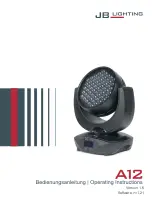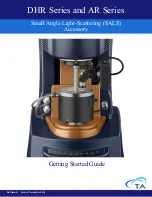
RS232 PROTOCOL
The C-816 Controller has an RS-232 port that allows the system to be controlled with an external
controller or become a sub-system in a whole-house control package. This allows the system installer to
integrate the operations of the C-816 with other control systems in the home.
The C-816 Serial Port allows full control of all system functions. In addition to being able to control the
C816/expansion Controllers ‘on board’ functions (on/off, input select, etc) RS-232 control includes
control of the Tuner and other source components, including any attached iPod/dock combinations.
When the C-816 ‘sees’ a command for one of the on board functions, it responds accordingly. When it
sees a command such as CD play, the incoming RS-232 command is interpreted in a similar manner to a
keypad button press and the C-816 will output the appropriate corresponding IR command.
The Serial Port on the C-816 uses a female DB9 connector wired in a DTE configuration. Tx (transmit)
= pin 2, Rx (receive) = pin 3, Ground = pin 5. Communication settings are 19200 baud, 8 bits, no parity,
no handshake.
Figure 1. RS-232 Port Pin Out
Each command must be terminated with a carriage return: <cr>. If an invalid command is sent, the C-
816 will respond with ERR. If a valid command is sent, the C-816 will respond with OK unless it is a
query type command, in which case the C-816 will respond with information. Every response from the
C-816 is terminated with <cr>.
The C-816 sends out unsolicited information whenever a keypad is operated. The syntax is the same as
that used for controlling the C-816. For instance, if someone turns on Zone 1 via a keypad, the C-816
will transmit Z011 out of the serial port. The string will be terminated with <cr>.
Note: the symbol <cr> shown in the table below represents a carriage return control character who's
value is hex 0x0d. This is what must be transmitted to the C-816 at the end of every command, not the
characters <, c, r, >.
RS232 command table starts on next page.
1.0 03/23/2011
2






























